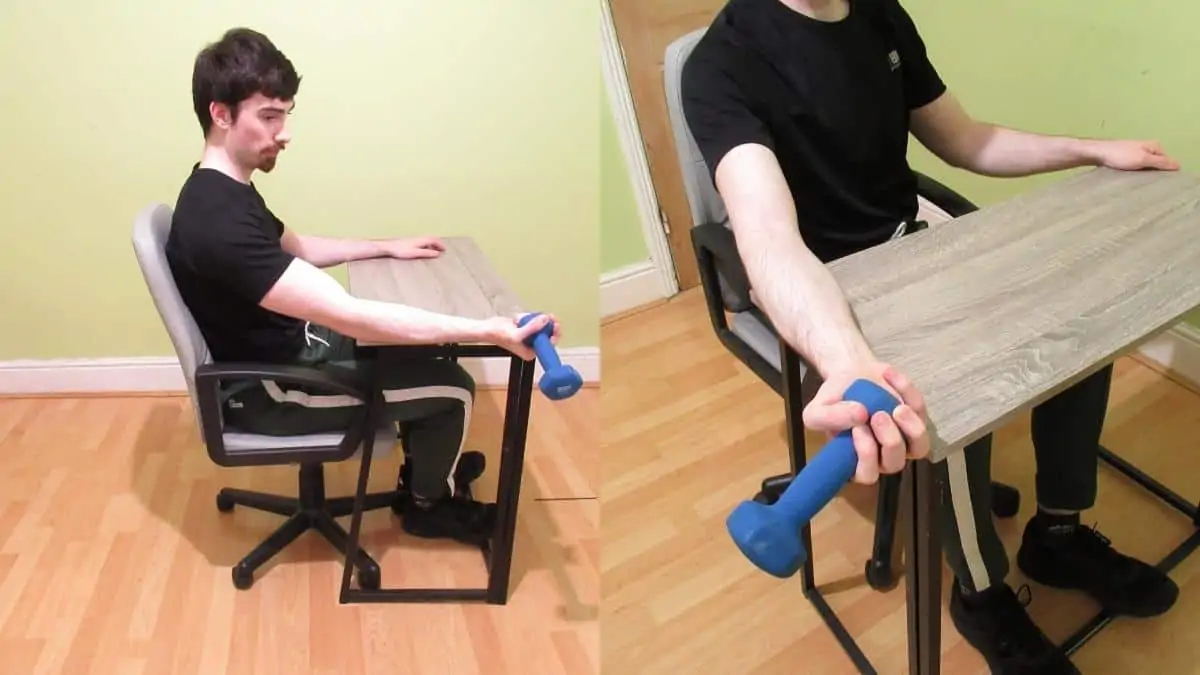The forearm anatomy has so many different muscles and functions that many people often forget all about supinator stretch drills. As a result, they’re often very weak in rotational exercises like the ones that I’m about to show you.
These stretches can help you to rehab after an injury, increase your general strength, and also help you to improve at sports and activities that require rotation of the hands, wrists, and forearms.
Related post: best forearm stretches
Top 5 supination stretches
These supination stretches are ordered from easiest to hardest, with the exception of the last one, which is something slightly different. I recommend starting with the simple drills before moving onto the more difficult stretches, unless, of course, your physiotherapist thinks that you can go straight into the weighted exercises.
1. Bodyweight rotations
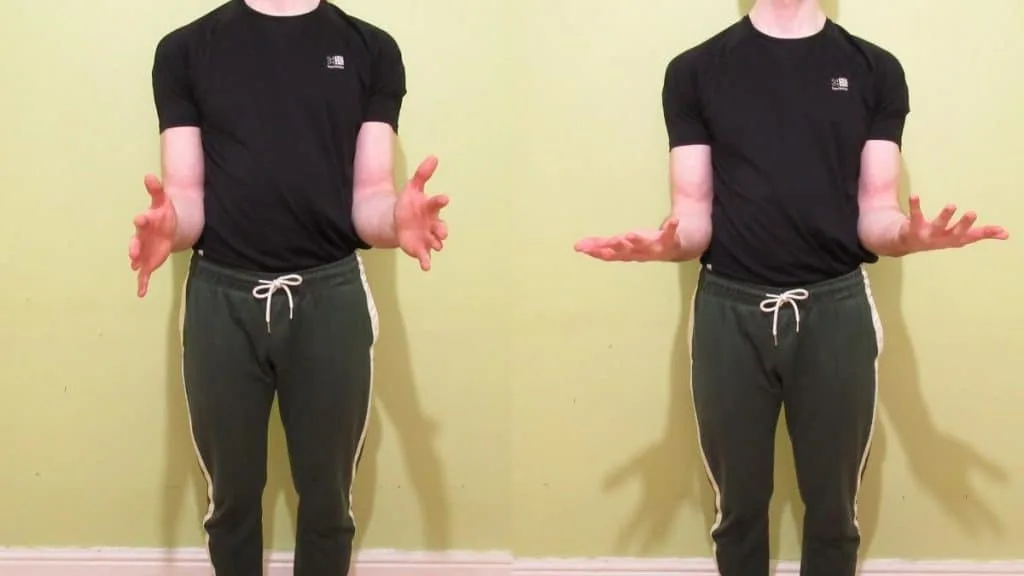
This exercise helps you to improve the rotational control of your forearm. There isn’t that much resistance to it, but if you’re currently in rehab, then simple and light is the best place to start.
- Pin your arms to the sides of your body with your hands in a neutral position (like you’re about to shake hands with someone).
- Slowly rotate your hand until your palm is facing up.
- Hold this position for 30 seconds and repeat an additional 3-4 times (for both arms).
2. Assisted supination

This exercise is much like the first, except this time, we’re using our other hand to intensify the stretch.
- Hold your arm by your side in a neutral hand position.
- Rotate your hand while keeping your shoulder still until your palm is facing up.
- Then, increase the stretch by supinating your hand even further away from the midline of the body by turning it with your spare hand.
- Hold this stretch for 30 seconds, do 3-4 sets in total, and don’t forget about your other arm.
3. Broomstick stretch
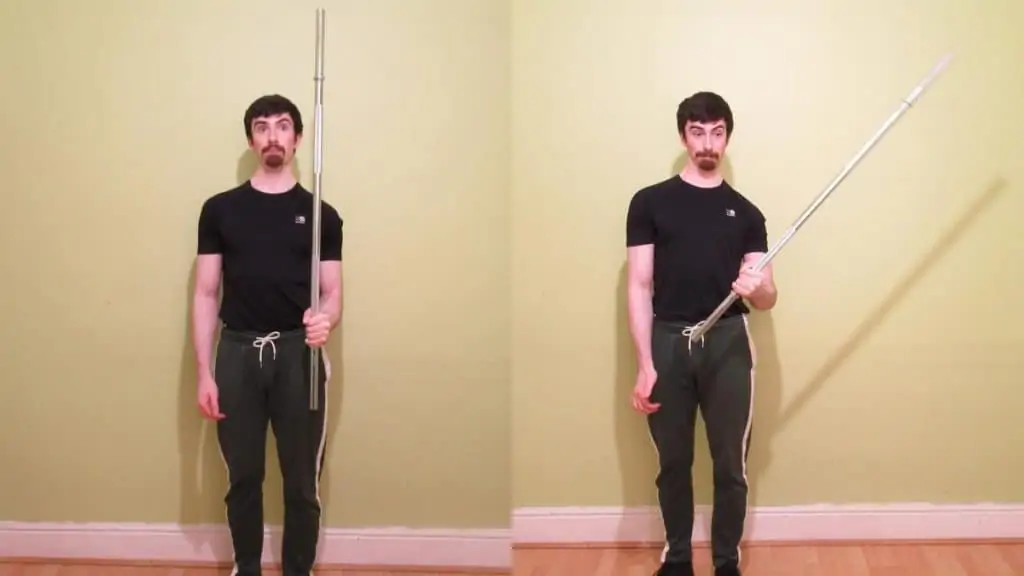
Since not everyone has a broomstick, feel free to use any other object of similar shape and weight. You could use some PVC piping or an empty aerobic barbell that they use during fitness classes. Don’t be afraid to get inventive.
- Pin your arm into your side and hold the broomstick in a neutral wrist position.
- Allow the broomstick to slowly rotate your hand until your palm is facing up.
- Hold this position for 30 seconds and do 3-4 sets in total.
You can also work on your pronation strength, which is the opposite of supination, by allowing the broomstick to rotate your hand into a palm-down position. By performing both variations, you’ll develop rotational strength in every area and not just in supination.
4. Dumbbell stretch
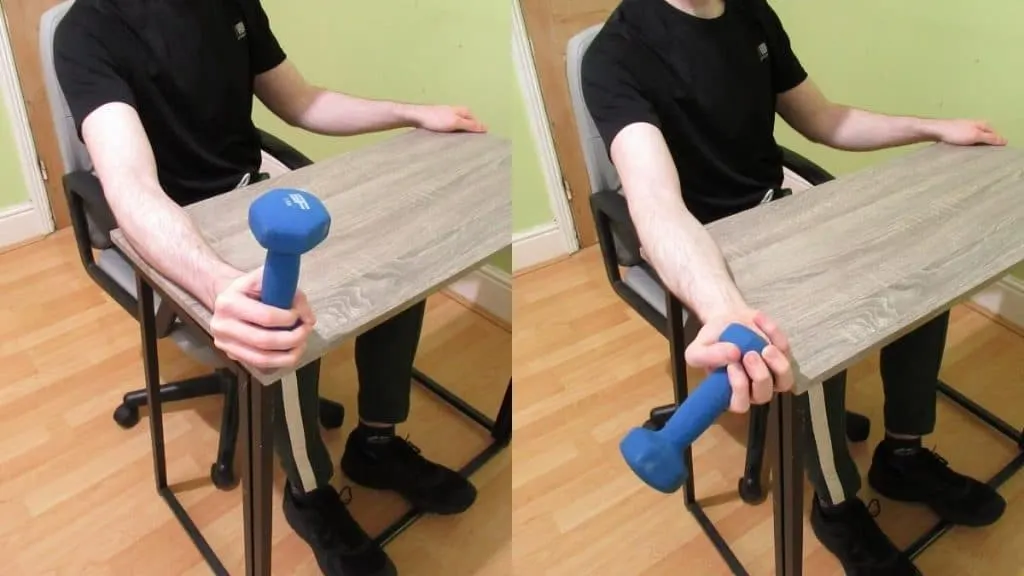
This dumbbell drill is one of the weighted supination stretches, and it’s particularly useful for building strength in your lower arms.
If it’s early on in your rehabilitation program after an injury, however, be sure to check with your doctor or physio that you can handle external resistance, as some conditions are much worse than others. [1]
- Hold one end of a dumbbell with a neutral wrist position, arm close to your side.
- Let the dumbbell slowly rotate your hand into a fully supinated position (be sure to resist the tension on the way down).
- Hold this position for 30 seconds and do 3-4 sets in total. Again, make sure to train your other arm.
5. Flexor stretch
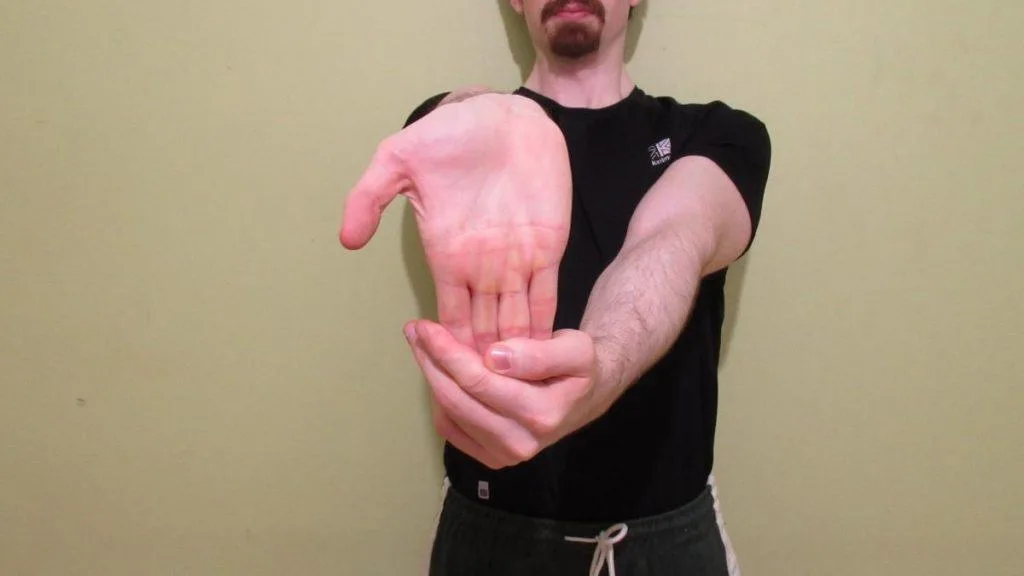
This supinator stretch relieves tension in some of the key muscles used in forearm rotation work. As such, you might wish to end each stretching session with this simple static exercise.
- Stand up straight and raise one arm out in front of you, elbow completely locked out.
- Raise your hand as if you’re waving to someone.
- Then, pull the tips of your fingers back with your spare hand.
- Hold this stretch for 15-30 seconds and do it 1-2 more times.
Read more: forearm pronation and supination exercises
What are the benefits of doing supination stretches?
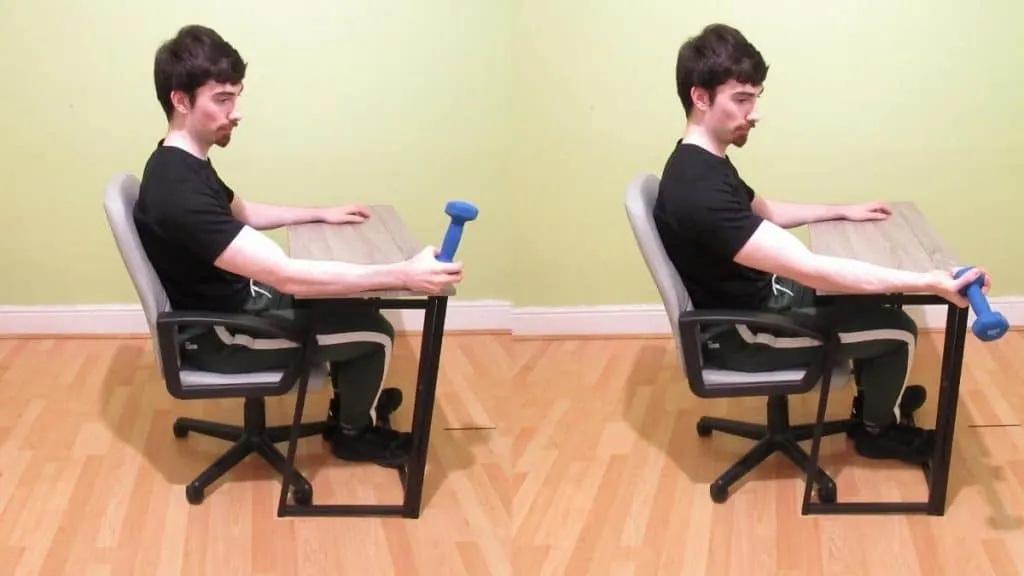
Supination stretches build rotational strength in your forearms. This extra strength and mobility can improve your overall lower arm function and help you to accomplish everyday tasks that require you to change forearm positions frequently.
Also, if you’re like me and perform a lot of computer work where your forearms are constantly pronated, these stretches can help to balance out the muscle in your lower arms.
How many stretches should you do?

I recommend choosing 2-4 stretches. Some people may only need to do a few sets to get the benefits, whereas others may need to start with a very light stretch before moving onto the weighted exercises.
Conclusion: Which supinator stretch drills are the most effective?
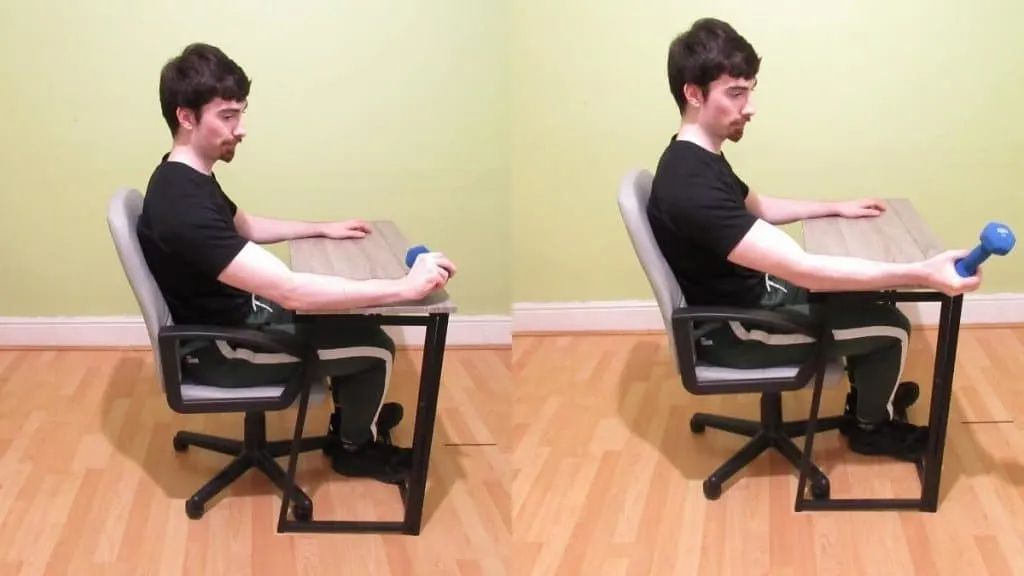
All of these supinator stretch drills are effective in their own way. For example, if you don’t have any equipment, then the first 2 stretches are a great place to start. Plus, the assisted stretch is really versatile because you can easily decrease or increase the intensity of the stretch with your own hand.
If you have a dumbbell or light implement like a broomstick available, then weighted stretches are also beneficial because they can really develop that crucial rotational strength in your lower arms.
References
- Colaris, J. W., Allema, J. H., Reijman, M., de Vries, M. R., Ulas Biter, L., Bloem, R. M., van de Ven, C. P., & Verhaar, J. A. N. (2014). Which factors affect limitation of pronation/supination after forearm fractures in children? A prospective multicentre study. Injury, 45(4), 696–700. https://doi.org/10.1016/j.injury.2013.09.041
- Haugstvedt, J.-R., Berger, R. A., & Berglund, L. J. (2001). A mechanical study of the moment-forces of the supinators and pronators of the forearm. Acta Orthopaedica Scandinavica, 72(6), 629–634. https://doi.org/10.1080/000164701317269076

